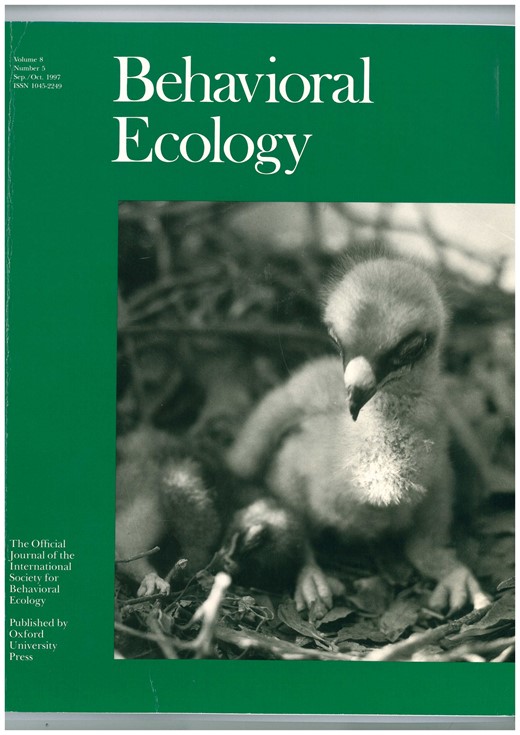-
PDF
- Split View
-
Views
-
Cite
Cite
Bart Kempenaers, Geert R. Verheyen, André A. Dhondi, Extrapair paternity in the blue tit (Parus caeruleus) : female choice, male characteristics, and offspring quality, Behavioral Ecology, Volume 8, Issue 5, September 1997, Pages 481–492, https://doi.org/10.1093/beheco/8.5.481
Close - Share Icon Share
Abstract
Extrapair paternity is common in many birds, and it is now generally accepted that female choice plays an important role. However, die benefits that females obtain from extrapair paternity are much less dear. To test the hypothesis that females obtain indirect fitness benefits, we studied paternity in a blue tit population over 4 years. Extrapair paternity occurred in 31-47% of all nests and accounted for 11-14% of all offspring. Most males that fathered extrapair young did not lose paternity themselves, males never “exchanged” paternity, and within nests the extrapair offspring were usually fathered by a single male. Comparisons between males that did and did not lose paternity and pairwise comparisons between the extrapair male(s) and the within-pair male showed that successful males had longer tarsi and sang on average longer strophes during the dawn chorus. Successful males weighed less (relative to their size) during the nettling stage, but nevertheless they survived better. Male age did not influence their likelihood of losing paternity, but extrapair males were usually older than the within-pair male they cuckolded. Within nests with mixed paternity, extrapair young were more likely to survive than within-pair young in cases of partial brood mortality. Our data also suggest that extrapair offspring were more likely to be males. Because extrapair males were usually close neighbors, male quality should be considered relative to the quality of the neighbors. Despite this, we found consistency in female choice over years. Our observations provide support for the hypothesis that female blue tits engage in extrapair copulations to obtain good genes for their offspring.



